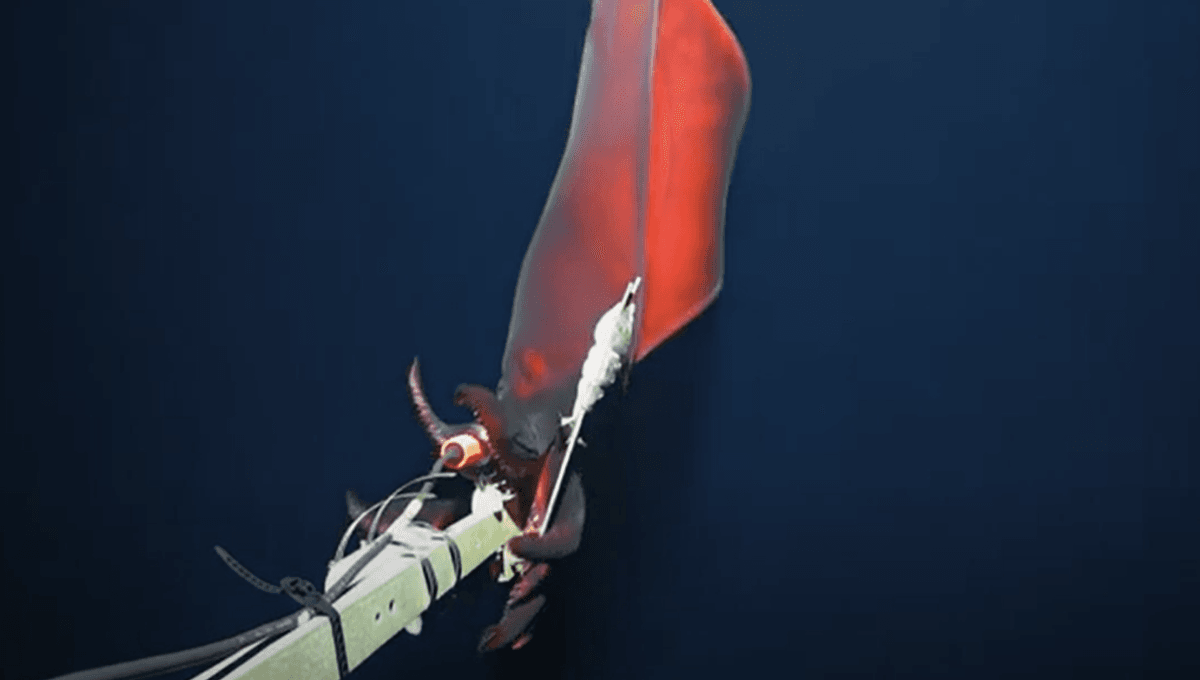
An extremely rare squid has been caught on camera in the dark depths of the Pacific Ocean while displaying some fascinating behavior.
As it descends towards the camera, the huge sea beast flashes its bioluminescent arm in an attempt to dazzle its target before grappling with the device. The squid seems to realize the gadget isn’t prey and quickly scuttles off into the dark.
The incredible footage (below) was recently captured by scientists from the University of Western Australia and Kelpie Geosciences in the UK while filming at a depth of 1 kilometer (3,280 feet) in the Central Pacific near the Nova Canton Trough.
The species is known as a Dana octopus squid (Taningia danae). While they can grow up to 2.3 meters (7.5 feet) in size, this individual was relatively small.
“The squid, which was about 75cm [29 inches] long, descended on our camera assuming it was prey, and tried to startle it with is huge bioluminescent headlights,” Associate Professor Heather Stewart, from Kelpie Geosciences and an adjunct at University of Western Australia, said in a statement.
“It then proceeded to wrap its arms around one of other cameras which in turn captured the encounter in even greater detail. I think we were very lucky to have witnessed this,” explained Stewart.
The squid’s bioluminescence is created by photophores, a specialized light-producing organ found in an array of organisms, most notably in deep-sea creatures.
The photophores of the Dana octopus squid are the largest known to science by a long shot. Most creatures typically wield numerous tiny photophores to luminesce, but this species uses two giant photophores that are comparable in size to a lemon.
There are a variety of theories that attempt to explain the squid’s light-emitting abilities. The leading theory suggests they use it to dazzle and disorient their prey, but it might also be used to illuminate the environment, allowing the animal to gauge distance in a dark deep-sea environment. It may also play a role in courtship behavior, used as a pretty display to woo potential mates.
Scientists know relatively little about this mysterious species because of their obscure habitat and elusive behavior. As such, short bits of footage like this are a gold mine for marine biologists who are itching to understand the deep sea’s inhabitants.
“Many records of this species are from strandings, accidental bycatch or from the stomach contents of whales,” explained Professor Alan Jamieson from the University of Western Australia.
“The rarity of live observations of these amazing animals makes every encounter valuable in gathering information on geographic locations, depth, and behaviour, plus it is such a unique animal that we hardly ever get to see, so we had to share it.”
Source Link: Rare Deep-Sea Squid Dazzles And Glows In Mind-Blowing Footage